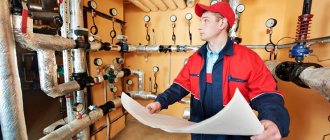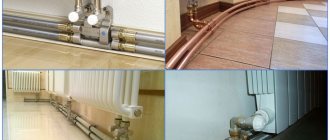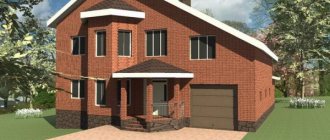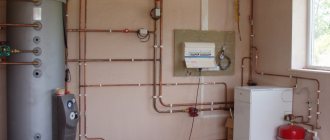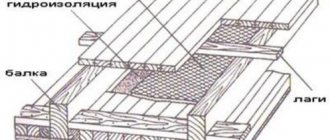Dear reader, what types of heating of private houses can you remember? The stove and wood boiler probably just popped into your mind. Maybe you have a picture of a wall-mounted gas heating device in your imagination? Meanwhile, there are many more ways to heat your home at minimal cost, and we will get acquainted with some of them today.
An excellent, time-tested solution. But it's far from the only thing.
Video description
In our video we’ll talk about heating in a private country house.
Our guest is the author and presenter of the Teplo-Voda channel Vladimir Sukhorukov: The main criteria when choosing heating systems :
- Minimum costs with high heat transfer. Providing housing with the required amount of heat and low installation, operation and maintenance costs.
- Maximum automation . To ensure safety, heating systems must be operated with the least possible human intervention in their operation.
- High wear resistance of all elements . The necessary equipment must be selected taking into account its operational reliability.
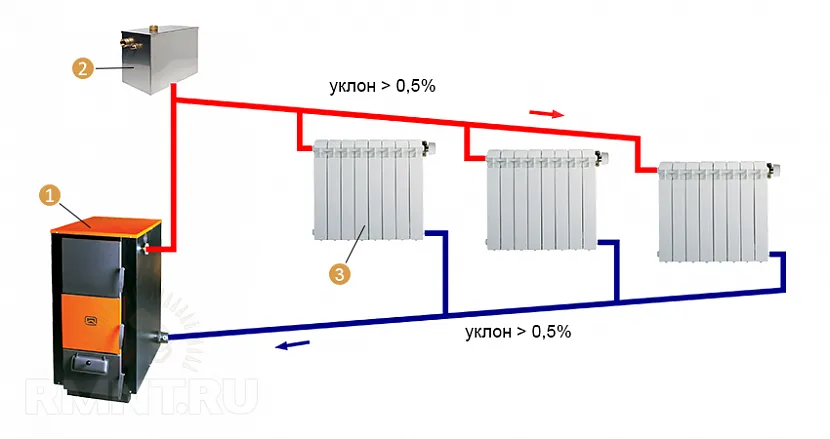
In some cases, you can use the formula: “the simpler, the more reliable” Source promogaz.ru
Forced circulation systems
Forced circulation systems are suitable for homes and facilities of any size, they are easily adjustable and more efficient in heat transfer. A great advantage is the comfort of use (the ability to maintain the required temperature in each room). They can use small diameter pipes. In such a system, there is less difference in temperature between supply and processing, which increases the service life of the boiler. The only drawback is the need for uninterrupted power supply.
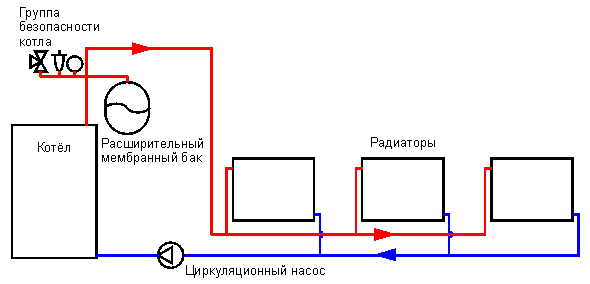
Heating systems are also available in open and closed types.
:
In the first case, an open expansion tank is used to compensate for the expansion of the coolant (water or antifreeze) in the heating system. In the second, a closed membrane tank is used.
In an open system, the expansion tank should be installed at the highest point of the system. In a closed one, there is no need to place a membrane tank at the top. A system with a closed membrane tank has many advantages compared to an open one. Here are the main ones: the tank can be placed near the boiler, there is no need to pull and insulate the pipe into the attic, pressure is created throughout the entire system, which promotes uniform operation of all radiators, there is no evaporation of steam or liquids. Open systems are rarely used these days.
Video description
What is air-to-air heating or forced air heating?
Minuses :
- the need for constant sunlight ;
- the need for complex calculations for the correct installation of photocells;
- installation of the roof at a 30 degree angle ;
- It is advisable to have a spare source of heat available.
Stove heating
The use of fireplaces and stoves is advisable only as a source of additional or temporary heat energy when installing heating systems in individual construction. Mainly used for heating country houses. In private houses with a large area, with permanent residence of people, they have no efficiency, since they are not able to ensure uniformity in the supply of heat throughout all rooms. Or you will have to additionally install a water heating system, and use the stove itself as a beautiful wood-burning boiler
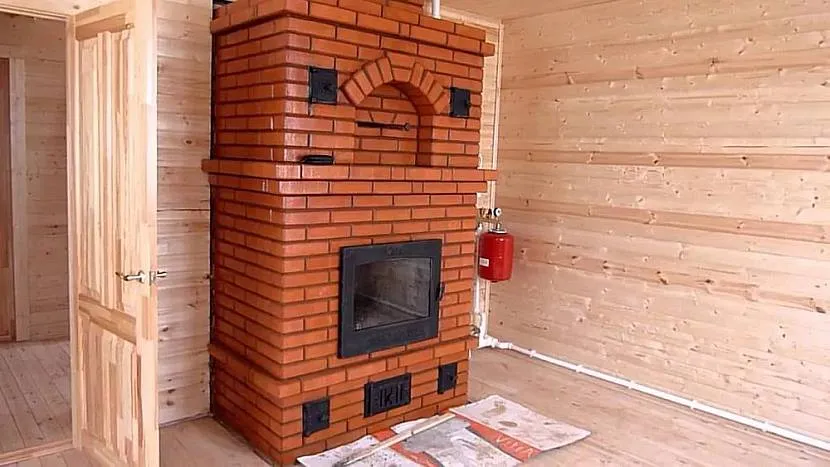
The stove is more suitable for a small house Source chrome-effect.ru
Air heating
These types of heating of various premises are considered one of the oldest. For the first time such a system was used before our era. Today, such a heating system has become widespread - both in public buildings and industrial premises.
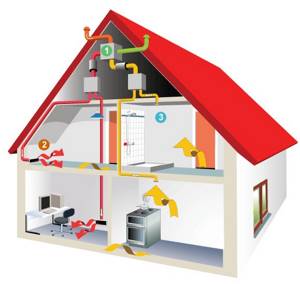
Air heating of a private house
Heated air is also popular for heating buildings. When recirculated, such air can be supplied to a room, where the process of mixing with indoor air occurs and, thus, the air is cooled to room temperature and heated again.
Air heating can be of a local nature if the building does not have central supply ventilation, or if the incoming amount of air is less than necessary.
In air heating systems, the air is heated by air heaters. The primary heater for such components is hot steam or water. In order to warm the air in the room, you can use other heating devices or any heat sources.
Local air heating
When asked what kind of heating there is, local heating is often equated only to industrial premises. Local heating devices are used for rooms that are used only during certain periods, in rooms of an auxiliary nature, in rooms that communicate with external air flows.
The main devices of the local heating system are a fan and a heating device. For air heating, devices and devices such as air heating devices, heat fans or heat guns can be used. Such devices operate on the principle of air recirculation.
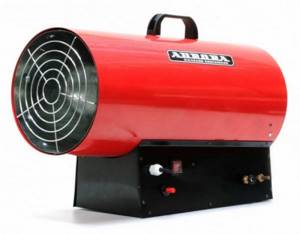
Heat gun
Central air heating
Central air heating is done in rooms of any type, if the building has a central ventilation system. These types of heating systems can be organized according to three different schemes: with direct-flow recirculation, with partial or complete recirculation. Full air recirculation can be used mainly during non-working hours for standby types of heating, or to heat the room before the start of the working day.

Central air heating
However, heating according to such a scheme can take place if it does not contradict any fire safety rules or basic hygiene requirements. For such a heating scheme, a supply ventilation system should be used, but the air will be taken not from the street, but from those rooms that are heated. The central air heating system uses such structural types of heating devices as: radiators, fans, filters, air ducts and other devices.
Air curtains
Cold air can come in in large quantities from the street if the entrance doors in the house are opened too often. If you do not do anything to limit the amount of cold air that enters the room, or do not heat it, then it can negatively affect the temperature regime, which should correspond to the norm. To prevent this problem, you can create an air curtain in the open doorway.
Types of water heating
At the entrances of residential or office buildings, you can install a low-rise air-thermal curtain.
Limiting the amount of cold air entering from outside the building takes place thanks to design changes in the entrance to the room.
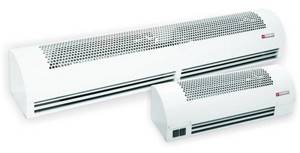
Electric air curtains
Compact air-thermal curtains have become increasingly popular lately. The most effective curtains are considered to be “shielding” type curtains. Such curtains create a jet air barrier that will protect the open doorway from the penetration of cold air currents. As a comparison of heating types shows, such a curtain can reduce heat loss by almost half.
Radial floor wiring
It happens when all the collectors are assembled in the boiler room. The advantages of fan wiring: each device can be turned off separately or adjusted by temperature, all pipelines can be laid in the floor, the system does not spoil the design of the premises, it is easy to calculate when designing, the ability to automate the system. Cons: more pipes, higher system costs. Sequential two-pipe system.

Often a classic two-pipe heating system with bottom wiring in residential apartment buildings. Heating pipelines are laid under the ceiling of the basement floor (in a false ceiling or open) or in the floor structure of the basement floor; heating risers are connected to them, providing heating fluids with coolant.
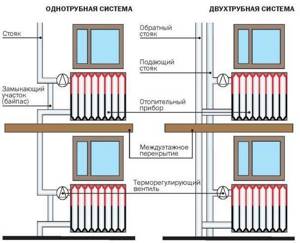
It is advisable to design this scheme for heating large country houses (from 1500 sq. m.), in the presence of an operation service. The advantage of this scheme is that in residential premises there are only heating devices, there are no cabinets, the floor screed is reduced (no space is needed for laying heating pipelines), in terms of material, relative to the manifold scheme, it is more profitable. Since this is a two-pipe circuit, the temperature difference across the device is constant, and if desired, each device can be turned off to replace it without stopping the entire heating system of the country house. In places where the drain is connected to the main line (on the ground floor), differential pressure regulators (balancing valves) are often installed - they can create a large local resistance and hydraulically equalize all risers in the building. One of the varieties of a two-pipe sequential system is a floor-to-floor heating system. The meaning of this system is as follows: a riser is raised from the boiler, and heating lines are laid on each floor along the perimeter of the house with heating devices connected in series to them. The main criterion for using this scheme is that the pipelines are located near the outer wall of the house and do not interfere with anyone or anything, and ease of installation - all pipelines are located near the floor, construction work is kept to a minimum (no grooves, niches for built-in cabinets), it is possible to turn it off each floor is separate, not expensive to install (relative to a cabinet layout). In addition to serial and radial pipe routing, in our work we often come across a “combined” type of routing. It is used in the case when, with radial wiring to one collector ring, several radiators are powered. As a rule, these radiators are located in close proximity to each other (in the same room). Or a combined collector type, when supply and treatment distribution manifolds are installed in the boiler room, and then the pipelines diverge along the circuits (to different rooms or even different objects). This system is effective in large cottages and buildings where there are many different thermal circuits or several rooms. Possibility of setting different temperatures in different rooms, inexpensive system to install.

There is also a collector type using a hydraulic arrow, when the boiler and the collector are powered in a circle by one circuit (primary circuit), and secondary circuits diverge to the heating system. Good to use when high processing temperatures are required. It is not yet widely used in Siberia due to the high cost of the system, but it is easy to set up and adjust. Our company’s specialists can correctly select, calculate (free of charge) and install the optimal heating system. CALL
Share on social media networks:
